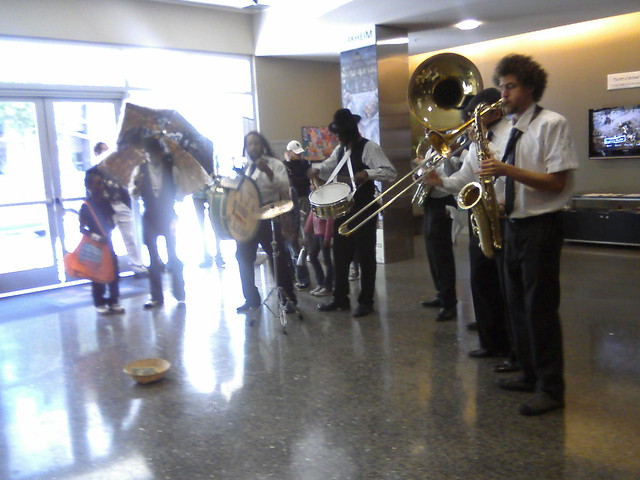Pressed between Lower Pacific Heights, the Western Addition and Japantown, the Fillmore has managed to fit an amazing amount of history and diversity into only a few blocks.
During my first walk down Fillmore Street, I was struck by the obvious and lasting effects of urban renewal, urban renewal was passed in 1948, and in essence forced out a majority of the black community, bulldozed the Victorian houses, built housing projects, and widened Geary Street to an expressway.
Urban renewal did not have good effects when it was first put into place, that is evident, but if you look closer, the modern urban renewal projects show a positive change. I saw a number of families playing at the newly renovated Hamilton Recreation Center, on the north side of Geary.
Once called the Harlem of the west, the Fillmore still attempts to maintain its reputation as the jazz capital of San Francisco. From the modern, sleek jazz clubs that dot the corners of Fillmore Street, to the Boom Boom Room, which is almost a jazz landmark, the lasting effects of the Fillmore jazz legacy can be seen throughout the area.
After World War II and up to the early 60’s some of the most famous names in jazz would play at the after hours clubs that had once lined the streets of the Fillmore, according to jazz photographer Mars Breslow, who works closely with the San Francisco Jazz Heritage Center and prominent club, Yoshi’s, both of which are promoting music and community for Fillmore district residents.

Almost everyone I talked to expressed how jazz was still alive, well and thriving in the Fillmore.
The Geary expressway still serves as a modern dividing line between the Fillmore district and what is considered Lower Pacific Heights and Japantown.
South of Geary, the Fillmore feels tough. But, beyond the empty storefronts, discount stores, and open areas littered with pigeons and transients are spots of strong community and hope for the future.
Just walking down Fillmore street I see businesses and restaurants of every variety. Shabu houses stand next to sleek jazz clubs, next to Eritrean owned cafés, across the street from a chicken and waffles restaurant, some businesses have been there since urban renewal took place.
Though urban renewal forced out a large part of the black community, the Fillmore has grown to be incredibly diverse, at least 2 people I talked to described the area as a melting pot.
More than anything, I am struck by the amount of diversity fit into the small district. Modern high-rises full of students, the same center that hosts community events, live down the street from a Russian elder care center. What I love most about this city is the different cultures who can exist and thrive next to each other, and the Fillmore is no exception.
Some Jazz Artists who played the Fillmore and made the Fillmore the Harlem of the West:
Sugar Pie De Santo
Johnnie Ingram
Vernon Alley
No comments:
Post a Comment